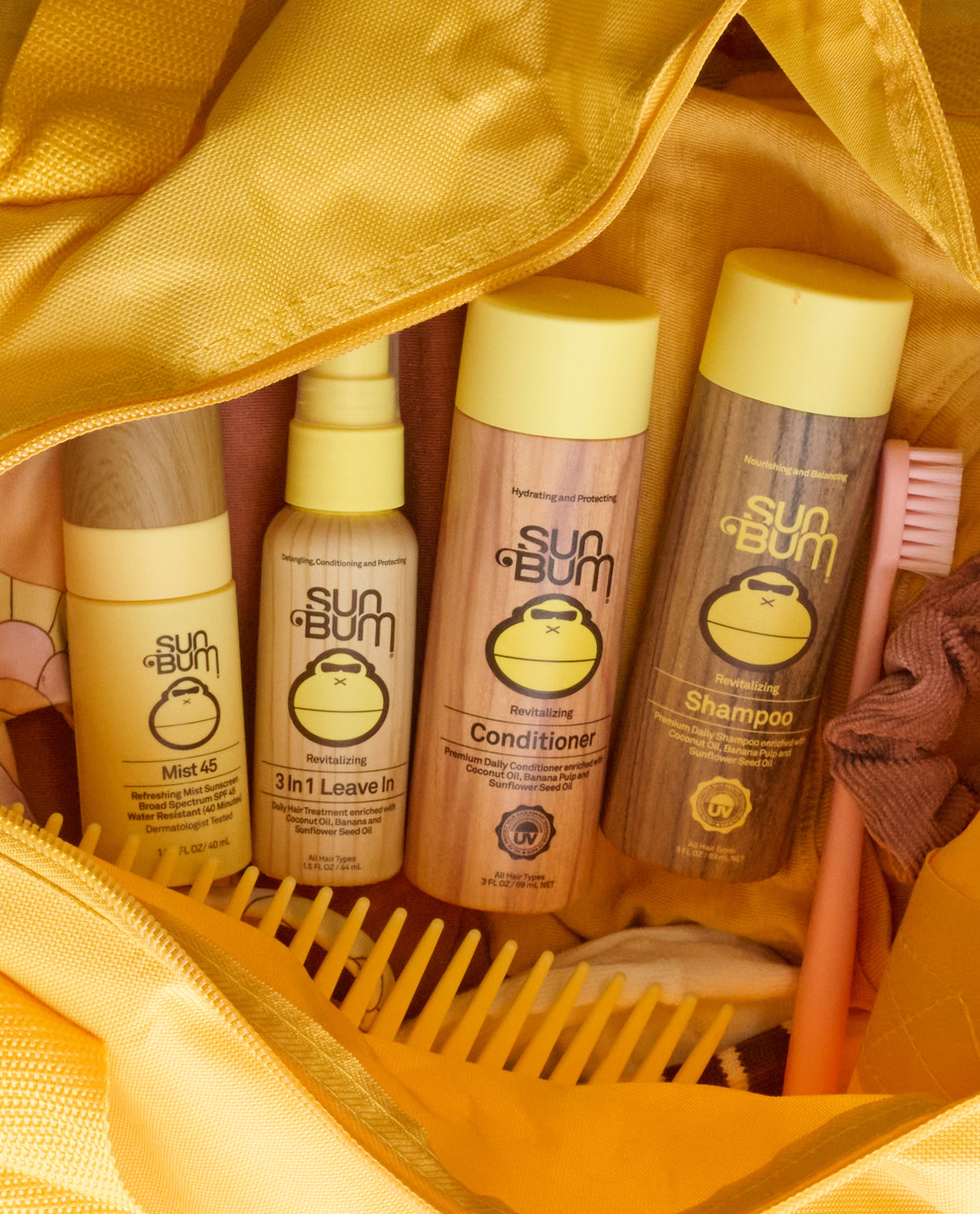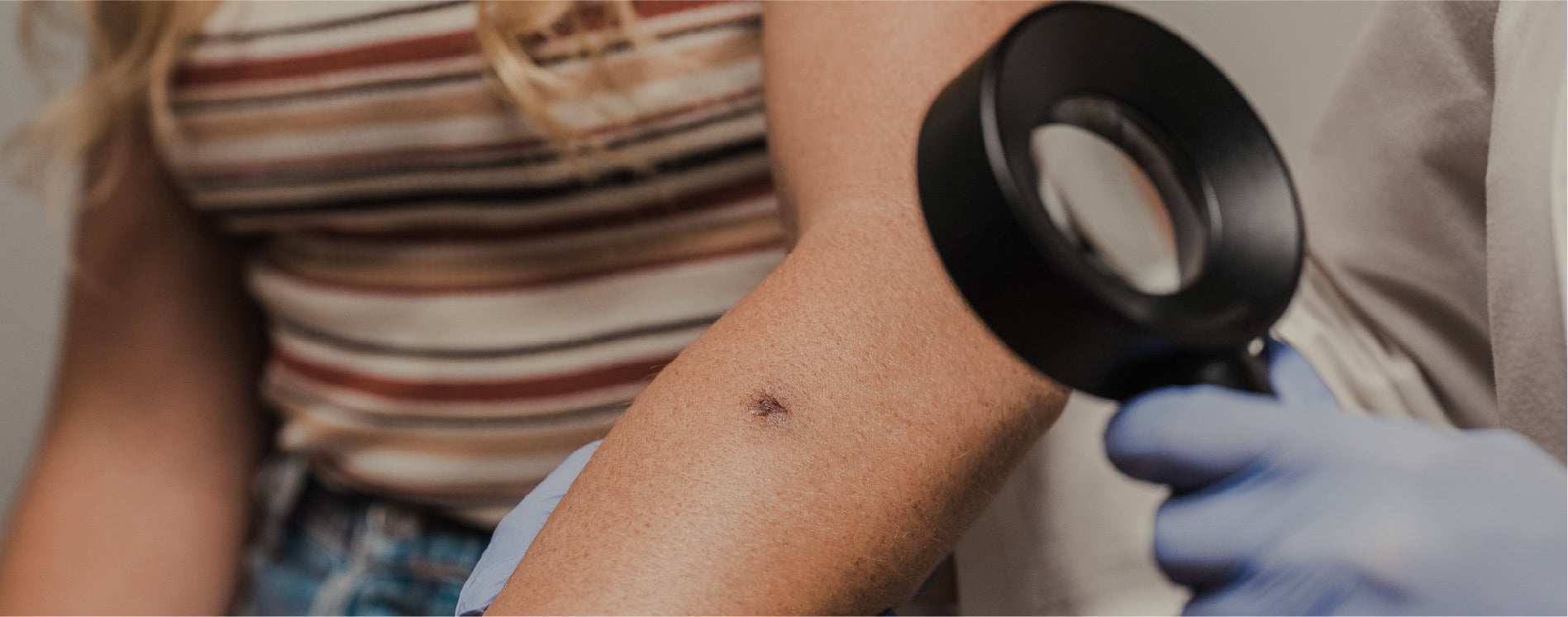Learn from a Derm
Meet Dr. Lindsey Zubritsky
Dr. Lindsey Zubritsky, MD, FAAD is a Florida native dermatologist and active member of the American Academy of Dermatology, where she serves as a social media ambassador as well as an editor for the Journal of the American Academy of Dermatology (JAAD). She has contributed to numerous beauty articles as a skin health expert, including Women's Health, The EveryGirl, Byrdie, InStyle, Forbes, CNN, just to name a few. Learn what she has to say about detecting and preventing skin cancer.
What are the different types of skin cancer?
Skin cancer is the most common type of cancer in the United States. There are many different types of skin cancer, but the most common types of skin cancer are non-melanoma skin cancers like basal cell carcinoma and squamous cell carcinoma. These types of cancers originate from the basal cells and squamous cells in our skin, respectively. While most of the time these are curable, they can be disfiguring if not addressed. The third most common type of skin cancer is melanoma. This is a type of cancer that involves our melanocytes or pigment producing cells in our skin. This type of cancer can be deadly and spread to other parts of the body.
What does skin cancer look like?
Characteristics of skin cancer vary depending on the type of skin cancer. Basal cell carcinoma comes in several different forms. I can appear as a pink, skin colored, or less often pigmented pearly or shiny bump, a bleeding sore that doesn’t seem to heal, a pink scaly patch, scar-like tissue, or a pink bump with rolled borders. Squamous cell carcinoma typically appears as a rough, red or pink bump or skin lesions. It can occasionally bleed, become crusted, or look inflamed. Sometimes it appears as a tender spot that grows gradually, a wart-like spot that crusts or doesn’t heal, or a rapidly growing volcano-like bump.

Melanomas can come in many different shapes, sizes, and colors. In general, the best way to identify a melanoma is to look for the ABCDE’s: Asymmetry in the mole, irregular borders, color changes (multiple colors, very dark or black colors, pink or red colors), diameter bigger than a pencil eraser (or bigger than 6 cm), and evolution or changing mole. Most of the time, our body creates moles that have a similar shape, color, and size. When melanoma is present, this typically looks much different than our normal moles and stands out like an Ugly Duckling.
I think I have a suspicious looking mole, what do I do next?
I recommend making an appointment with a board-certified dermatologist as soon as you notice a suspicious looking mole. When it comes to melanoma, time is of the essence. When you arrive for your appointment, the dermatologist will likely ask you to get into a gown in order to fully examine your entire body. We check every nook and cranny from your head to your toes. We use a tool called a dermatoscope which is like a special magnifying glass that allows us to look closely at the pattern of the mole to determine if it has any suspicious features. If the dermatologist believes the mole is suspicious for a skin cancer, then likely a biopsy will be performed in the office. This is a simple and easy procedure in which the lesion is anesthetized with a local numbing agent and removed either via a shave or punch biopsy.

Do I still need to use sunscreen even if I have darker skin?
Absolutely! All skin types need sunscreen. While those with darker skin types are less susceptible to sunburns, exposure to UV light without SPF protection can still induce DNA damage, putting these individuals at risk for skin cancer. Furthermore, while those with darker skin are less likely to get skin cancer, they are more likely to die from the disease because of being diagnosed at a later stage.
Do I really need to wear sunscreen/use sun protection every day—even if the sun isn’t out?
Sunscreen should be worn every single day regardless of the weather. Whether it’s raining, cloudy, or snowing, I recommend wearing a broad-spectrum SPF of at least 30+ daily. Even on cloudy days, up to 80% of UV rays can pass through the clouds, which is enough to result in sun burns or DNA damage. Furthermore, elements like snow and water can reflect UV rays and multiply your UV exposure by hitting your skin from above and bouncing off the snow or water on the ground leading to twice the exposure!
How much sunscreen should I be using? And how often do I need to reapply?
Most adults need approximately 1 ounce of sunscreen, or a shot glass worth, to cover their entire body. I recommend applying at least 15-30 minutes prior to sun exposure and reapplying every 2 hours and reapplying more often if you’re swimming or sweating excessively. Don’t forget to apply to often neglected areas like ears, back of neck, back of hands, lips, and scalp!

What’s the best way to treat sunburns?
The most important rule about sunburns is to prevent them! But if you happen to develop a sunburn, I have a few tips to help. First, I recommend avoiding hot showers, as this can worsen or cause more pain. Instead, opt for cool showers or baths to relieve the pain. Try using a moisturizer with aloe vera to soothe any discomfort. I recommend putting your aloe vera in the refrigerator to keep it cool for extra cooling sensation. A topical corticosteroid, either prescription or over-the-counter hydrocortisone, can also help to relieve discomfort. I also recommend aspirin or ibuprofen to reduce swelling, cool loose clothing fabrics, and staying hydrated.
What are some good sun safety practices?
I recommend choosing a sunscreen that’s broad-spectrum, at least SPF 30+, and water-resistant. It’s best to avoid the sun during peak hours, which is usually between 10 AM and 4PM. In addition to sunscreen, I like sun protective clothing (usually labeled as UPF) such as long sleeve shirts and long pants, wide-brimmed hats, and UV protective sunglasses. It’s best to seek shade when possible.





















